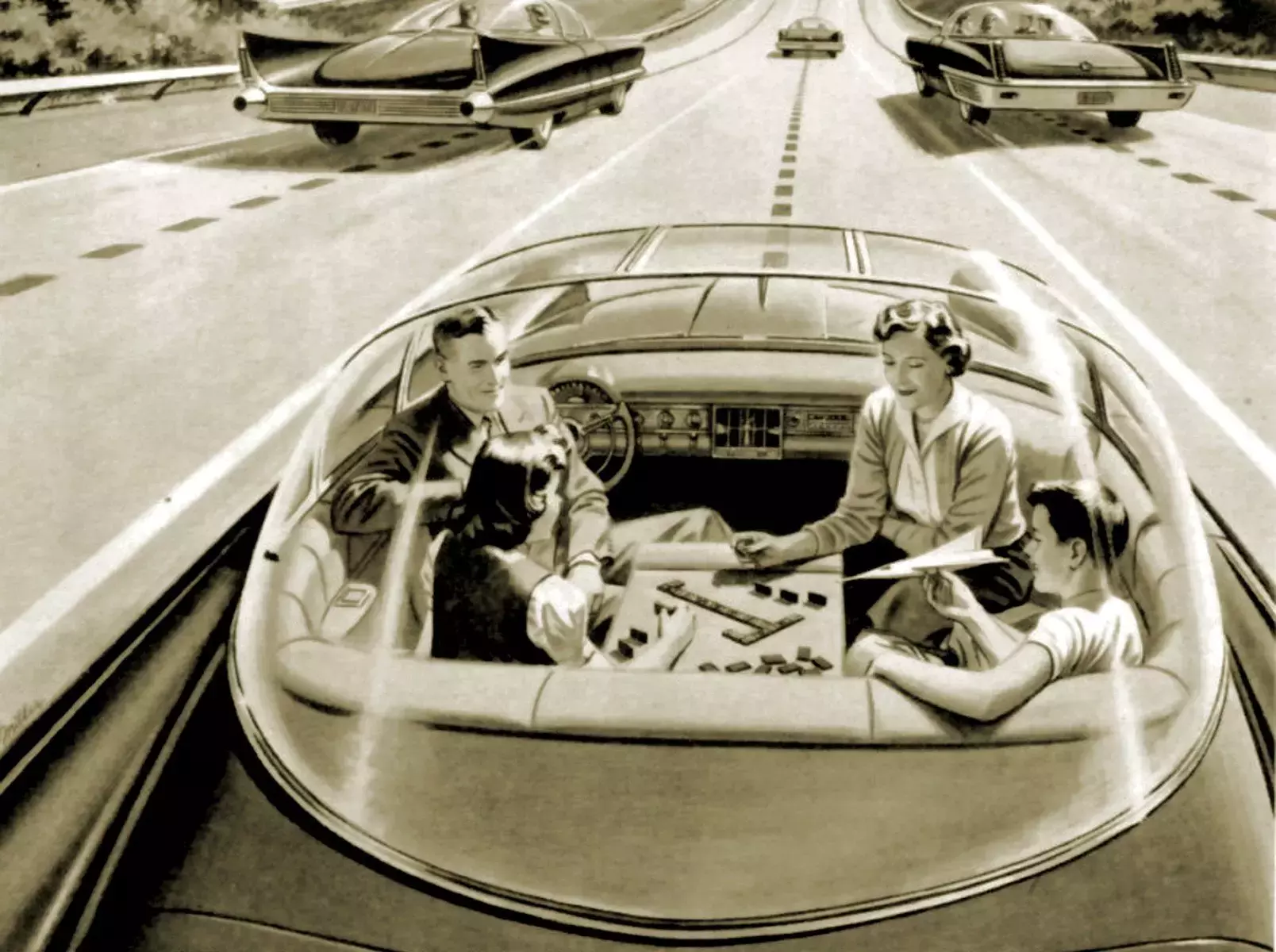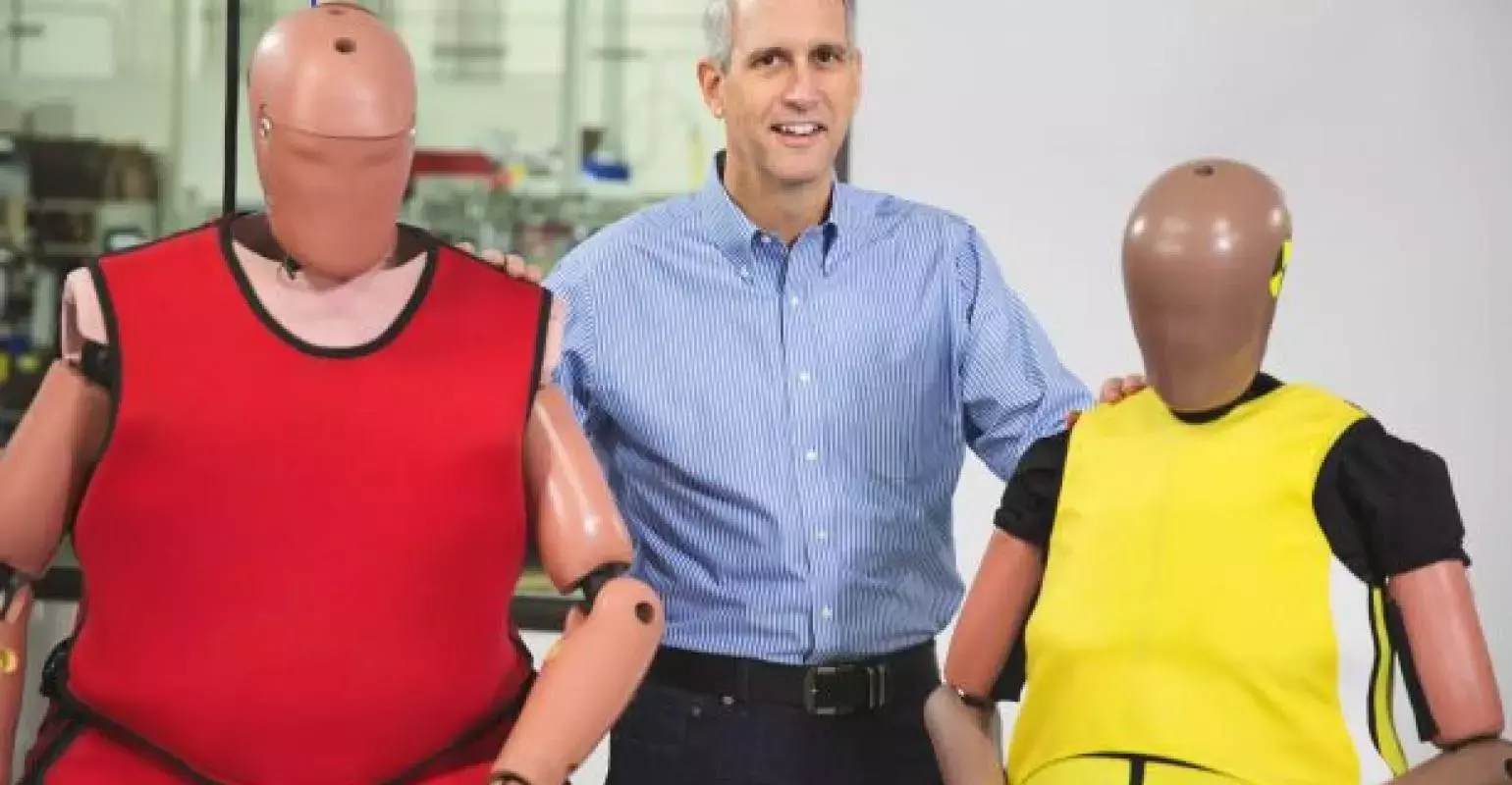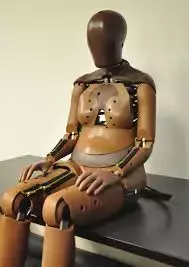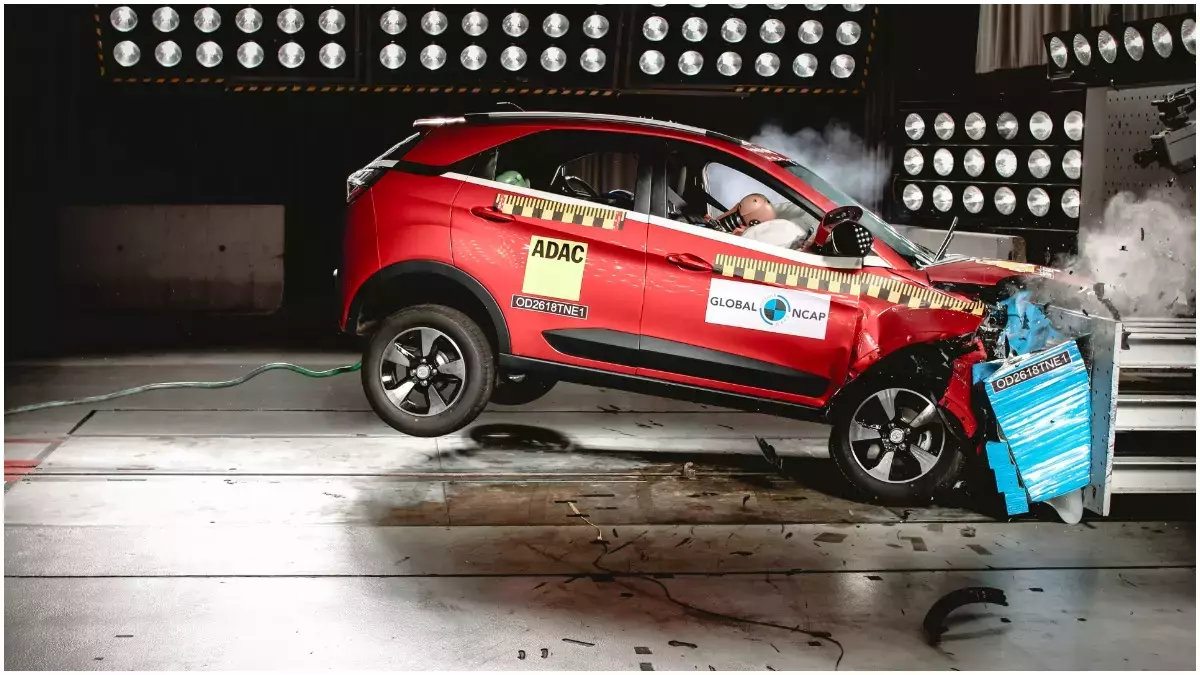Rapid development of automated vehicles is driving ATD innovations, as Humanetics’ CEO explains.
By Lindsay Brooke

A classic 1960 magazine ad from U.S. electric power utilities predicted an autonomous-driving future but with wire-guided vehicles. The ad copy read: “Highways will be made safe—by electricity! No traffic jam...no collisions...no driver fatigue.” And, no provision for out-of-position passenger restraint.
A few years ago, Chris O’Connor started to notice a common talking point emerging from within the many Autonomous vehicle conferences and meetings he was attending.
“It seemed that many people in the industry, and those in Congress, were saying: ‘With autonomous cars, we won’t have traffic accidents anymore,” noted O’Connor, the CEO of Humanetics Innovative Solutions, the leading developer of anthropomorphic test devices (ATDs), commonly known as crash-test dummies. “And since there won’t be crashes, we will no longer have to worry about occupant safety,” he recalled many pronouncing.
At the time, AVs were just emerging as The Next Revolution in mobility. Industry leaders and policymakers alike were being seduced by the growing hype—that self-driving vehicles will eliminate virtually all road accidents.
“Since then, of course, we’ve all come to realize such statements are ridiculous,” O’Connor said.
“There will be crashes involving Autonomous vehicles. They will have electronic systems that will fail, and software problems. These are realities we’ll have to face.”

Humanetics’ CEO Chris O’Connor with his company’s latest ‘obese’ ATD (in red vest) and ‘elderly’ ATD. The THOR family of crash-test dummies incorporates enhanced biofidelic features and significantly expanded data acquisition capability, compared to the standard Hybrid-III 50th percentile adult male ATD.
O’Connor is not a critic of AV technology and its potential to significantly reduce road crashes, injuries and fatalities. In fact, he’s a vocal advocate whose deep knowledge of and experience in the vehicle crash-testing sector and the analysis tools used in the industry is helping to bring the emerging challenges around AV occupant safety into practical focus. He is quick to point out that much of the industry’s scenario planning is being done based on an occurrence of approximately 37,000 annual fatalities—while six million accidents of all types occur every year in the U.S. alone.
“We cannot stop thinking about occupant safety as autonomous vehicles become more common on our roads,” O’Connor asserted. “We’ve all seen some of the seating layouts for AVs, particularly within the concept cars at shows. They feature passengers sitting facing one another, because no one needs to driver or focus attention on the road. That’s challenge number one.”
Future visions
The passenger compartment to which he refers is not new. It’s been capturing the public’s imagination since the “jet age” 1950s and the “space age” 1960s, when General Motors showed its Motorama and Futurama concept cars gliding driverless along electromagnetic wires embedded in the highway. The occupants of these futuristic cars sat playing cards, dining, or chatting. Such images became indelible in the public’s mind. But the truly hassle-free and nearly accident-free reality will require years’ more engineering, science, and safety systems testing, O’Connor notes. In the meantime, many technical hurdles must be solved. What will an autonomous shuttle, for example, or SAE Level 4 vehicle with their occupants riding facing each other, present to vehicle safety testing, the stan- dards behind the testing, and the development of even more specialized ATDs?
Meet the THORs
The industry’s newest state-of-the-art frontal crash ATD is Humanetics’ THOR-50M. The acronym stands for Test device for Human Occupant Restraints; the suffix indicates 50th percentile male. It’s one of an extensive family of increasingly sophisticated human replicants engineered to endure severe impacts and deliver vital data.
THOR replaces the previous Hybrid-3 dummy, developed by Humanetics in the 1980s. Although the latest iteration of Hybrid-3 has been updated with up to 20 sensors, “it’s really primitive compared with the technologies available today,” O’Connor explained.
The primary design objectives for the more human-like THOR included greater biofidelity, dynamic response, repeatability and durability. Its internal data acquisition systems, capable of delivering up to 150 channels of information, are specific to injury assessment.
The latest Humanetics’ THOR model (shown) is a female version, designed to ensure better protection for women who are physiologically more prone to crash-related injuries and fatalities than men. The female THOR joins other specially tailored Humanetics ATDs, including models for elderly and obese people, who also experience automobile accidents differently than the 50th-percentile male.
“We made the Elderly dummy proportionally correct based on data for a 70-year old woman,” O’Connor explained. “’She looks a little obese, but it’s exactly average. This is very important for restraint systems.” He said data show more elderly fatalities result from a liver or spleen being ruptured. And not only are injury and fatality rates higher for the elderly, but the deaths typically don’t happen at the time of the accident but rather days later as a result of internal organ ruptures. “We instrumented not only the abdomen [in the new elderly THOR] but also the organs,” O’Connor noted. “This is important for determining whether a restraint device or part of the car is causing an organ injury and ultimately the death of a senior person.”

Newly introduced ‘female’ THOR ATD showing construction details, including zipper access to internal data-acquisition ‘organs’.
“Let’s say you’re sitting in a car seat that has its backrest position set at 23 degrees. There is currently a standard test for that seating position. Recline the seat to 33 degrees or 43 degrees; this is not an extreme difference, yet your rate of injury could go up dramatically under each of these circumstances,” he said.
Then spin the seat around so it’s facing in the opposite direction. Or angle it sideways. These positions are being portrayed as common and acceptable in the new world of autonomous driving. O’Connor suggests another likely scenario in the not-too-distant future: traveling in an autonomous shuttle heading to the airport. You’re seated in a middle row seat that’s facing the rear of the vehicle, like riding in a train. In this position your head is directly facing the frontal crash zone. At the same time, one of your co-riders sharing the shuttle has rotated her seat, as it was designed to do, around to the side so she can watch the scenery pass by.
With such a vehicle, the entire structure will have to be re-envisioned completely—to cope with worst-case impact scenarios.
“It’s not a simple thing,” O’Connor continued. “Look at the [robot taxi maker] Zoox model. Their car has a quad seating configuration where the two rows of seats are facing each other. The car can travel forward or backward, it doesn’t matter. Reclining the seat alone, in such a configuration, has the potential to be more dangerous.
You’re more apt to recline the seat in an AV because you don’t have to pay attention to the road; you’re watching a movie or want to take a nap. These vehicle concepts have to be studied, and now is the time to consider the overall safety, in the early design phase.
Rethinking crash testing
Based in Farmington Hills, Michigan, Humanetics manufactures about 250 ATDs per year, O’Connor said. Each model can take 10-15 years of development, followed by extensive approval processes at NHTSA, NCAP, and various government agencies, and can cost up to $800,000 each, depending on equipment. About 75% of the company’s sales are outside the U.S.

The moment of truth during the 2018 Global NCAP crash test of Tata Motors’ new Nexon. The compact SUV achieved a four-star adult occupant rating and a three- star child occupant rating.
O’Connor’s engineers have been working with the OEMs to create test procedures for the unconventional, often out-of-position seating configurations of AVs. “We’re being very proactive about this. We’re taking our latest and most advanced THOR dummy [see sidebar] and modifying it for autonomous vehicle testing,” he said. “Because in these altered seating configurations, the traditional safety belts and airbag restraints will not work effectively.
“The OEMs all know they are going to have to modify and rethink these systems and they need a proper test device to evaluate them,”
O’Connor predicts that the new THOR series will be used in the next- generation NCAP (New Car Assessment Program), as well as in NHTSA’s new oblique testing protocol. Under these new guidelines, a stationary vehicle will be struck by a crash sled at 56 mph (90 km/h) with a 35% overlap, and the test vehicles positioned at a 15- degree angle relative to each other. In this scenario, vehicle occupants are easily tossed out of position from the restraint system—offering valuable insights for the design of future AV structures, cab- in, and safety-systems.
With AV development moving rapidly at a growing list of vehicle OEMs, O’Connor and his team are also working on developments to prepare for European NCAP’s 2020 program. The new protocols include a comprehensive revamp of safety ratings, with numerous new tests and assessments added, and the scores associated with the current tests modified. Euro NCAP 2020 is similar to NHTSA’s proposed NCAP program.
“In the past, the U.S. led the way in automotive safety. However, in the last 10 years we’ve lost that lead to other regions, as other markets continued to add Pedestrian protection and other critical tests and higher standards,” O’Connor asserted. “The proposed new U.S. NCAP is the chance for the U.S. not only to catch up, but to move ahead.”
For this reason, Humanetics is currently leading a consortium of private enterprises to address safety issues specific to autonomous vehicles, such as non-traditional seating positions within these cars. This is notable for Humanetics and other consortium members, as it shows private industry is voluntarily taking a proactive lead in addressing issues which have traditionally been government’s domain.
“We have to move at a high rate of speed,” O’Connor stated. “We’re a big proponent of virtual testing and we make all virtual-dummy computer models available to the OEMs, to help them run simulations in advance of actual crash tests. However, only by testing the physical product can we be sure the test is being done correctly and the expected results are achieved.”

Christopher J. O’Connor
Chris is the CEO and President of the Humanetics Group and is passionate about advancing safety. Through his leadership and mission in developing advanced technology to prevent injury and save lives, he is recognized as the “father of the modern crash test dummy” and one of the industry’s leading safety experts. Chris serves on various boards, has previously worked at several Fortune 500 Companies, and is a US Army Colonel (retired).